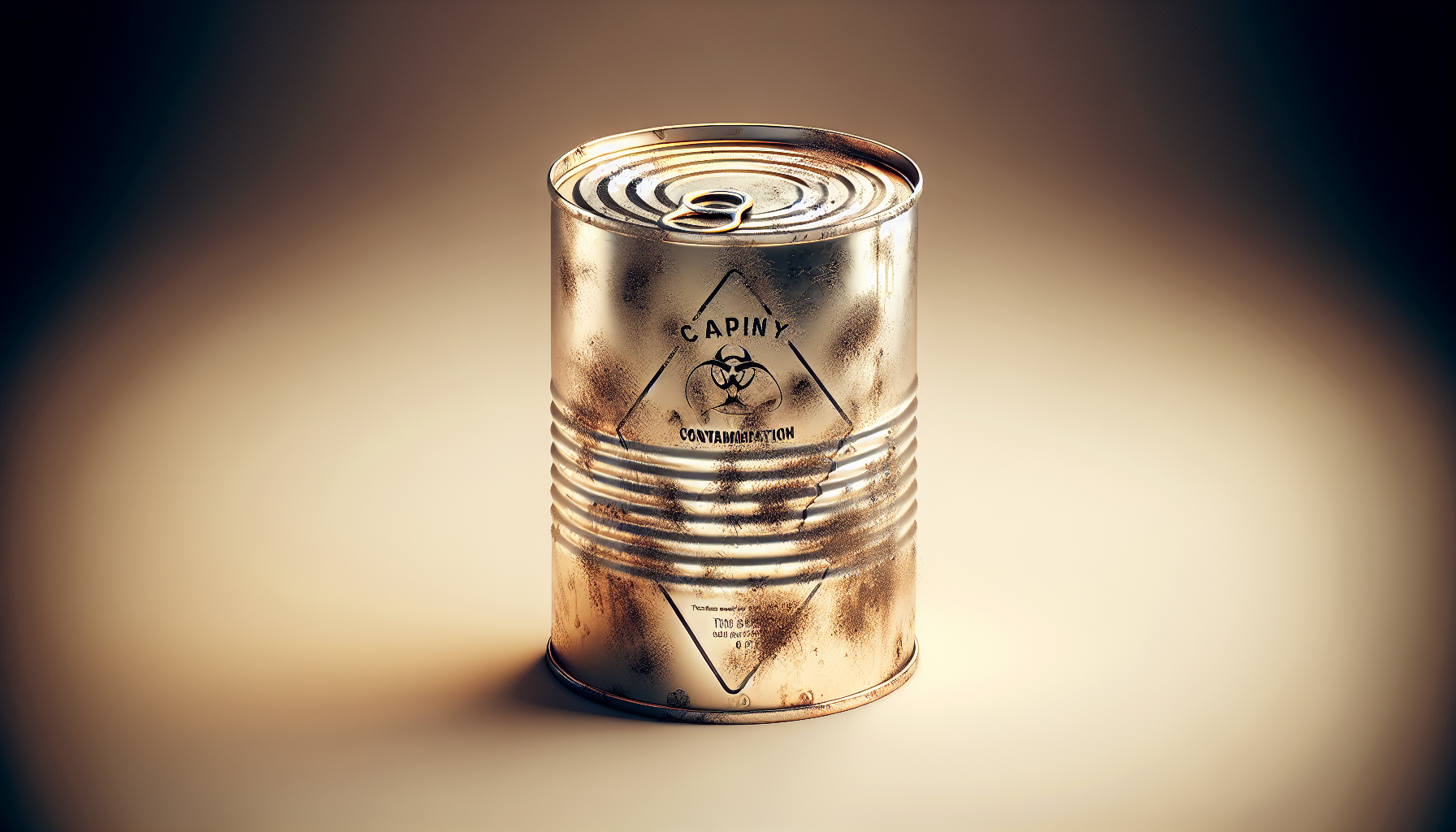Have you ever thought about what you would do if your emergency food supply suddenly became contaminated? It’s a daunting situation that no one wants to face, yet being prepared for such an event is crucial to ensuring your wellbeing during a crisis. In this guide, we’ll walk through the steps to take if your emergency food supply gets contaminated, providing you with the knowledge and tools needed to handle this unwelcome scenario with confidence and clarity.

Understanding Food Contamination
What is Food Contamination?
Food contamination occurs when harmful substances compromise the safety and quality of your food. This can happen due to various factors such as improper storage, pests, chemicals, or even natural disasters. Contaminated food can pose serious health risks, making it crucial to prevent and address contamination effectively.
Types of Contaminants
There are several types of contaminants that can affect your emergency food supply:
- Biological Contaminants: These include bacteria, viruses, and fungi that can lead to foodborne illnesses.
- Chemical Contaminants: Pesticides, cleaning agents, and other chemicals can contaminate food if they are not stored properly.
- Physical Contaminants: Foreign objects like glass, metal, or plastic that accidentally come into contact with food.
- Environmental Contaminants: Damage from exposure to floodwaters, smoke, or other environmental hazards.
Understanding these contaminants can help you identify and manage potential risks to your food supply.
Precautionary Measures to Prevent Contamination
Proper Storage Techniques
One of the best ways to prevent contamination is to ensure your food is stored correctly. Use airtight containers, keep food away from chemicals, and store it in a cool, dry place. Regularly inspect your storage area for signs of pests or damage.
Regular Inspection and Rotation
Regularly inspect your emergency supply for any signs of spoilage, such as unusual odors, color changes, or bulging cans. Rotate your stock by using older supplies first and replacing them with new ones to maintain freshness.
Hygiene and Cleanliness
Maintain high hygiene standards when handling your food supply. Wash hands thoroughly, clean storage areas regularly, and ensure all surfaces are sanitized to prevent bacteria from spreading.
What to Do if Contamination Occurs
Identifying Contaminated Food
The first step in dealing with contamination is to identify affected items. Check for strange odors, mold, or discoloration. If in doubt, it’s better to err on the side of caution and assume contamination.
Segregation of Contaminated Items
Once identified, immediately segregate contaminated food to prevent cross-contamination with your uncontaminated supply. Use gloves and masks to protect yourself during this process, especially if the contamination is biological.
Safe Disposal Practices
Dispose of contaminated food safely by sealing it in a bag before placing it in the trash. If the contamination is due to chemicals, check local waste disposal guidelines, as special handling may be required.
Decontamination of Storage Area
After removing contaminated items, thoroughly clean the storage area. Use disinfectants and ensure the space is dry before restocking. This helps prevent future contamination and keeps your new supplies safe.
Health Precautions and First Aid
Recognizing Symptoms of Foodborne Illness
Should you or anyone in your household consume contaminated food, it’s vital to be aware of the symptoms of foodborne illness. Common symptoms include nausea, vomiting, diarrhea, abdominal pain, and fever.
Initial Response to Foodborne Illness
If symptoms appear, try to hydrate the affected person with clear fluids and provide rest. Over-the-counter medications may help alleviate mild symptoms, but consult a healthcare provider if symptoms persist or worsen.
Professional Medical Assistance
In severe cases, seek medical attention immediately. Bring a list of the contaminated food consumed to assist healthcare providers with diagnosis and treatment.

Rebuilding Your Emergency Food Supply
Evaluating Current Stock
After handling contamination, evaluate the remainder of your stock. Determine what’s safe to use and what needs to be replaced. This is an opportunity to improve your emergency preparedness.
Replenishing Supplies
When replenishing your emergency food supply, opt for items with long shelf lives and favorable storage conditions. Consider adding water purification tools, as contaminated food can often lead to water issues as well.
| Food Type | Approximate Shelf Life | Storage Tips |
|---|---|---|
| Canned Goods | 1-5 years | Keep in a cool, dry place |
| Dry Foods | 6 months – 1 year | Use airtight containers |
| Freeze-Dried | 25-30 years | Store in a sealed, moisture-free area |
Continuous Monitoring and Management
Regularly monitor and manage your food supply to ensure it remains in good condition. This could include checking expiration dates, rotating stock, and keeping a detailed inventory.
Creating a Contamination Response Plan
Importance of Having a Plan
A well-thought-out plan is crucial to effectively handling food contamination. It helps prevent panic and ensures you can address the situation swiftly and effectively.
Developing the Plan
Include identification, isolation, and disposal procedures along with health response protocols. Train all household members on executing this plan during an emergency.
Regular Plan Updates and Drills
Regularly review and update your contamination response plan to reflect any new information or upgrades to your food supply. Drills can ensure everyone is familiar with the procedures.

Conclusion
While the idea of contamination in your emergency food supply is unnerving, being prepared and informed empowers you to manage the situation effectively. With proper precautions, swift action, and an efficient response plan, you can safeguard your health and maintain peace of mind during trying times. Remember, preparation is not about fear but ensuring your safety and security in any scenario.

